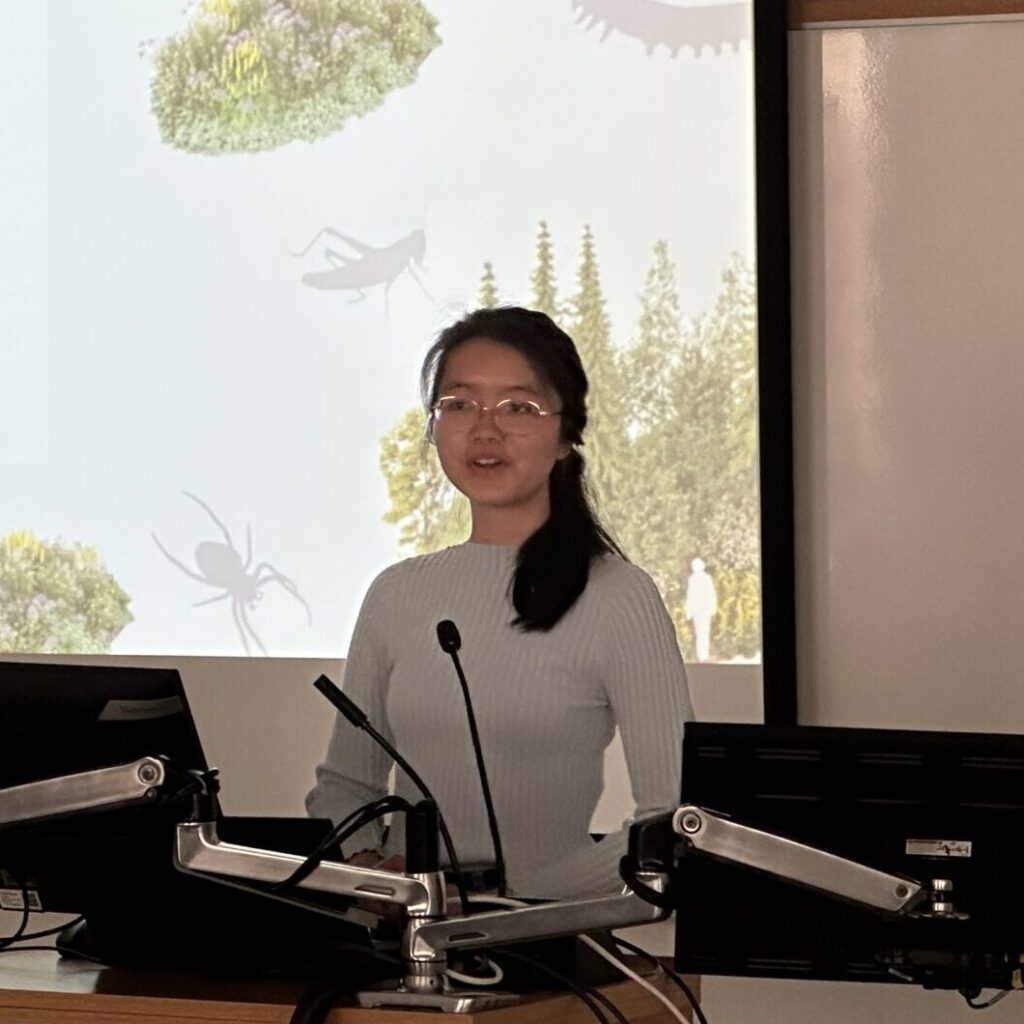Nicole Yu
Meet the New Neighbors: evaluating arthropod diversity in an urban ecological corridor (MSc Biology)

Garland Xie
Leveraging anonymized smartphone GPS data to quantify drivers of human activity within and across urban parks (Ph.D)

Nicole Yu is a MSc student who is currently working on her thesis, “Meet the New Neighbors: Evaluating arthropod diversity in an urban ecological corridor”. She is studying biodiversity plots that have been introduced in Montreal’s parks and green areas. The effectiveness of these plots and additionally the management strategies of these plots has not been measured before. Nicole would like to see what plot designs and management strategy is most effective in increasing biodiversity and biodensity in these plots.
In order to measure the biodiversity of each plot she is using specific arthropods higher in the food chain as a marker for the presence of biodiversity and biodensity in each plot. She is specifically looking at spiders, grasshoppers, and butterflies. Spiders are a good indicator of the presence of other species as food. Next, Grasshoppers are sensitive ecological indicators. Lastly, butterflies are helpful to get citizens excited to study these biodiversity plots.
Nicole plans to recruit citizen scientists from Montreal to observe and document their findings from each biodiversity plot. Using sweep netting and pitfall traps to capture and record the number of arthropods in each plot.
She hopes with the data she collects she can inform the city of Montreal and other cities planning to implement these biodiversity plots on how to best manage and maintain these plots for the most effectiveness.
Garland Xie is a PhD student working on “Leveraging anonymized smartphone GPS data to quantify drivers of human activity within and across urban parks”. He is trying to use anonymized 100 meter square GPS location data from cell phones to track movement through parks.
After ground truthing the anonymized data by comparing the amount of booking for a park and the number of cellphones in green space a positive correlation was found. Furthermore a correlation was found with record path density and path density from the GPS data. The GPS data could give an indication to where, when, and how people are moving through the park.
The GPS data can also give information for statistics around each park. For example parks with more people living around them tend to have high amounts of park visitors. Similarly parks with more amenities also have higher attendance. The park GPS data can be used to inform park managers for decisions based on people’s movements.
One challenge faced by Garland is the prohibitively expensive cost of the GPS data. This data is normally sold to larger businesses to gather information about where potential customers are. The demand market for the data is low and so application for use in government funded parks for example is difficult.